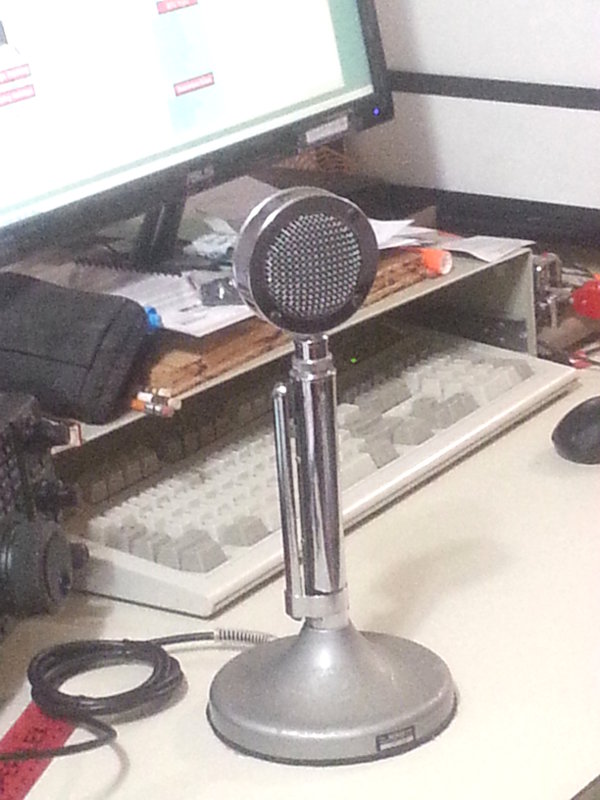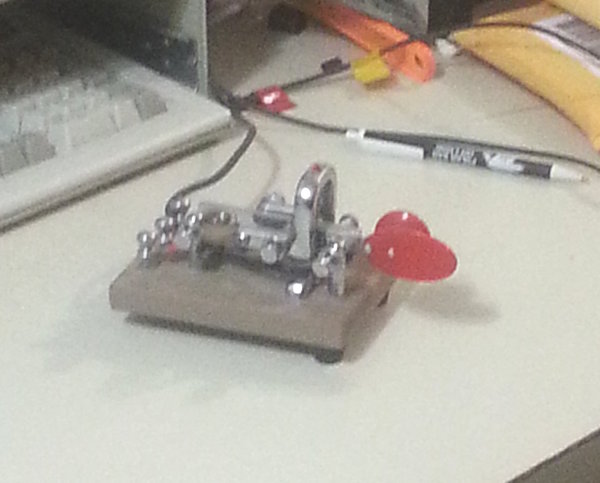
The Microphone here at AL7X is the Astatic D104
In 1930, a couple of ham radio operators, Creed Chorpening, W8WR (later W8MJM), and F.H. Woodworth, W8AHW, were trying to come up with microphones that had the quality necessary for their ham sets. Charles Semple, a friend, had been experimenting with Rochelle salt crystals. Semple demonstrated some crystal pick-ups.
Chorpening and Woodworth both recognized that the crystal microphones provided excellent quality audio and would be perfect for use on their ham radios. As a result, Chorpening and Woodworth started "The Astatic Microphone Laboratory, Inc." in Youngstown, Ohio in 1933. Semple was hired as General Manager to manufacture and market the first line of D-104 Crystal Microphones.
Astatic soon became a leader in Microphone and Record Player Turntable pickps. In World War II they produced various products under war time contracts. They designed and built the Sonar undersea microphone for submarines.
As with all name brands, some conglomerate picked up the Astatic name in 2001, and production of the D-104 ceased.
The above historical excerpt based on work of K3DAV.
The manufacture of D-104 microphones did not change for the 68 years it was in production. The microphone cartriges are still available; the entire housing, stand, etc. was produced until the very end. The stands, while looking identical, had some later models with Transistorized amplifiers introduced in 1962. My own D-104 has such a stand; I assume the microphone head is from the same date as the stand. Look in eBay for a selection ...
I wired it to my Icom 7410. I connected the microphone internals so that there is continuous audio from the Mic to the radio, allowing me to use Push-to-Talk (PTT) or Voice-Operated-Xmit (VOX) as selected by the ICOM.
Then I called Dennis Weidler, KL1OE, manager of KICY and a connoseur of quality audio. I set up a simple test on ten meters, with Microphone A being the D-104, and Microphone B being the stock Icom hand microphone for the IC-7410 radio. I did not tell him which mic was which.
He said that microphone A was head and shoulders better, with better fidelity, punch, presence, clarity and ease of listening to compared to Microphone B. Of course, Mic A was the D-104.
Not bad for a Microphone now 80 years old!
